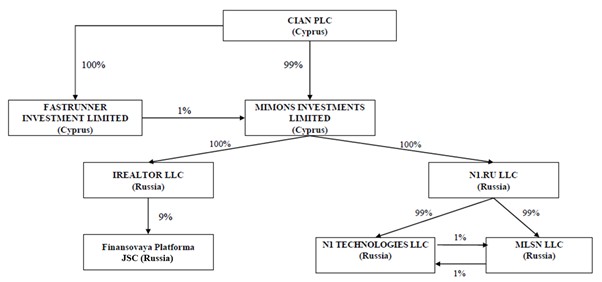The loss of any of our board members, our senior management or key employees could materially impact our ability to execute our business plan and strategy, and we may not be able to find adequate replacements in a timely manner. The market for highly skilled directors, senior management or other key employees is limited. We also do not currently maintain insurance coverage for loss of key management. Our hiring potential is significantly dependent on our reputation and publicity. If we do not succeed in attracting well-qualified directors, executives and other employees or retaining and motivating existing directors, executives and other employees, it could have a material adverse effect on our business, results of operations, financial condition and prospects. In the past year, two of our independent directors resigned from our board of directors as a consequence of the military conflict between Russia and Ukraine and resulting imposition of sanctions and other measures (see “—Risks Relating to the Russian Military Operation in Ukraine—Our business may be affected by sanctions, export controls and similar measures targeting Russia as well as other responses to the military conflict in Ukraine”). As the general confidence in investments in Russia and Russian businesses has decreased dramatically since the commencement of those military hostilities, we may encounter difficulties finding suitable replacements for departing directors, especially independent directors, which could result in our being in breach of our corporate governance policies or the listing rules of the NYSE for a period of time. Furthermore, any depletion of in our board members could have a negative impact on the ability of our board of directors to approve certain transactions in timely manner or at all.
Our fraud detection processes and information security systems may not successfully detect all fraudulent activity by third parties aimed at our employees or customers, which could adversely affect our reputation and business results.
Third-party actors have attempted in the past, and may attempt in the future, to conduct fraudulent activity by engaging with our customers by, for example, posting fake real estate listings on our sites and attempting to solicit personal information or money from customers, and by engaging with our employees by, for example, making fake requests for transfer of funds or sensitive information. Though we have sophisticated fraud detection processes and have taken other measures to identify fraudulent activity on our mobile applications, websites and internal systems, we may not be able to detect and prevent all such activity. Similarly, the third parties we use to effectuate these transactions may fail to maintain adequate controls or systems to detect and prevent fraudulent activity. Persistent or pervasive fraudulent activity may cause our customers and users to lose trust in us and decrease or terminate their usage of our services, which could have a material adverse effect on our business, results of operations, financial condition and prospects.
We may be subject to claims, suits, government investigations and other proceedings that may result in adverse outcomes.
We are, from time to time, involved in, or may in the future be subject to, claims, suits, government investigations and proceedings arising from our business, including actions with respect to intellectual property, advertising, privacy, consumer protection, information security, real estate, data protection or law enforcement matters, tax matters, labor and employment and commercial claims, as well as actions involving content generated by our customers. Such claims, suits, government investigations and proceedings are inherently uncertain, and their results cannot be predicted. Regardless of the outcome, any such legal proceedings can have an adverse impact on us because of legal costs, diversion of management time and other factors. In addition, it is possible that a resolution of one or more of such proceedings could result in reputational harm, liability, penalties or sanctions, as well as judgments, consent decrees or orders preventing us from offering certain features, functionalities, services or requiring a change in our business practices or technologies, which could have a material adverse effect on our business, results of operations, financial condition and prospects.
We are exposed to the risk of violations of anti-corruption laws, anti-money laundering laws, and other similar laws and regulations.
We operate and conduct business in Russia, where there may be a heightened risk of fraud, money laundering, bribery and corruption. We have policies and procedures designed to assist in compliance with applicable laws and regulations and we may be subject to the U.S. Foreign Corrupt Practices Act of 1977 (“FCPA”) and the U.K. Bribery Act 2010 (the “Bribery Act”). The FCPA prohibits providing, offering, promising or authorizing, directly or indirectly, anything of value to government officials, political parties or political candidates for the purposes of obtaining or retaining business or securing any improper business advantage. The provisions of the Bribery Act extend beyond bribery of government officials and create offences in relation to commercial bribery. These provisions are more stringent than the FCPA in a number of other respects, including jurisdiction, non-exemption of facilitation payments and penalties. In particular, the Bribery Act (unlike the FCPA) does not require proof of corrupt intent to be established in relation to bribery of a public official and also creates offences for being bribed as well as bribing another person. Furthermore, unlike the vicarious liability regime under the FCPA, whereby corporate entities can be liable for the acts of their employees, the Bribery Act also includes an offense applicable to corporate entities and partnerships, which carry on part of their business in the U.K. and fail to prevent bribery, which can take place anywhere in the world, by persons who perform services for or on behalf of them, subject to a defense of having adequate procedures in place to prevent the bribery from occurring. This offence can render parties criminally liable for the acts of their agents, joint venture, or commercial partners even if done without their knowledge, thereby making the Bribery Act even more expansive than the FCPA.
